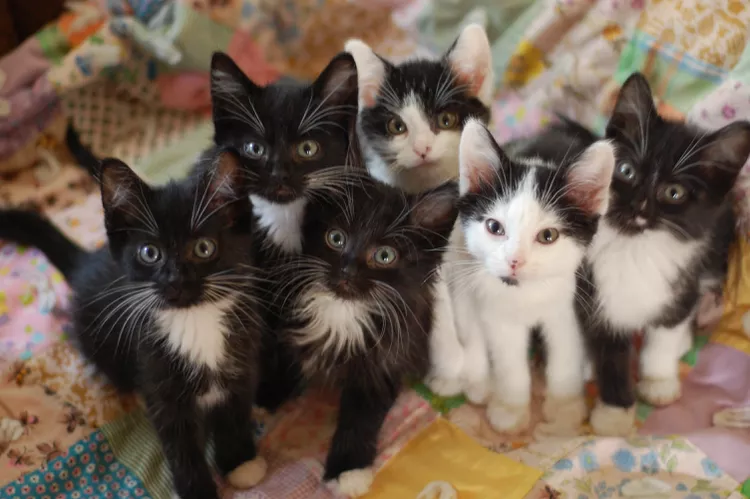How Many Litters Can a Cat Birth in One Year?

Oops, you missed the magic age for spaying your female cat and now she's pregnant. Don't worry. As a responsible pet owner can you can choose to support her through pregnancy, find good homes for the kittens, and then spay her immediately, once the youngsters are weaned, or you can take her to your vet to be spayed immediately before the litter is born. Aborting the pregnancy may seem harsh, but over population is a real problem and hundreds of thousands of cats are euthanized in shelters every year, so preventing more kittens from being born can save lives.
So what if your cat becomes pregnant again before you get the chance to spay her? Since a mature cat's gestation period is much shorter than a human's, this makes her susceptible to subsequent pregnancies throughout the year. Understanding the stages of a cat's fertile life will help you jump on spaying her before an unexpected pregnancy happens.
Puberty
Similar to humans, the age in which a cat reaches puberty varies and depends on both their genetics and environmental factors. This hormonal shift likens itself to human teenage years when your cute little pet suddenly starts to exhibit less-than-desirable behavior. Betweem five and nine months, depending on her breed, she may begin to howl or crave more affection from you while you're watching television. Your now queen may even display behavior such as scratching your favorite furniture to stake a claim on her territory. What causes this Dr. Jeckyll and Mrs. Hyde transformation? Raging hormones, of course.
Sexual Fertility
Once your cat reaches puberty, she can go into heat at any time. In fact, cats, like rabbits, are efficient reproducers and heat cycles can occur every 14 to 21 days. This fact of nature can contribute to feral colonies of cats, making the responsibility of spaying and neutering that much more important for pet owners. But if you missed your window, you will know your cat is in heat by the loud mating call she exhibits to attract a potential suitor. At this point, she can mate with several suitors resulting in a litter that yields kittens from two, or more, different tomcats. Make sure your cat is kept indoors away from any potential mates. Some vets will spay a cat, or kitten, who's in heat although this does increase the risks associated with the surgery. Talk to your vet to find out the best time to spay your cat.
Gestation Period
Once pregnant, a cat's gestation period is roughly 2 months, making it possible for her to birth as many as five litters a year. If your cat mistakenly slipped outside during heat, there are a few potential signs of pregnancy. The first notable sign is darkened and enlarged nipples, as your cat's body prepares to make milk for its young. Secondly, and most notably, will be her increased appetite and swollen abdomen. As she nears the end of her pregnancy, she may even start nesting by searching around for a secluded place to make a comfy birthing spot. Look for her in laundry baskets and corners of closets. If you suspect your cat is pregnant, schedule an appointment with your vet do to a quick checkup and a possible x-ray or ultrasound. Some cats can experience a pseudopregnancy where they develop all the symptoms of pregnancy, including lactating, without actually being pregnant.
Is Cat Menopause Really a Thing?
Technically speaking, feline menopause is a myth. While a cat's fertility may decline as she gets older, decreasing her chance of having multiple litters in one year, even geriatric cats can give birth. In fact, animals, in general, rarely exhibit a life expectancy that extends beyond their childbearing years. However, pregnancies in later life can pose health risks to both the litter and the mother cat. The litters and babies of geriatric queens tend to be much smaller and the stress of motherhood results in a poorer quality of life for older cats.
Proactive Measures
When you add up the number of kittens a healthy, of-age cat can bear, the resulting care of both mother and babies seems daunting to a typical cat owner. This type of situation is mostly reserved for tabloid headlines about cat collectors and backyard breeders (aka "kitten mills"). These scenarios often lead to feral cat colonies when irresponsible owners dump unwanted cats out into the street. Don't contribute to the unwanted pet population and spay or neuter your cat before you become a statistic.